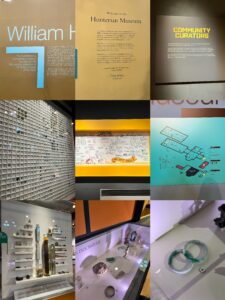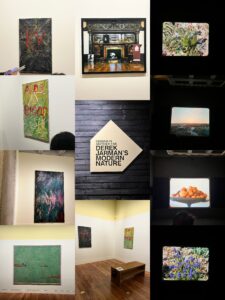Hunterian Museum: A Dialogue of History, Diversity and Civilization

1. The Light of Enlightenment Across Time and Space
Opening the door of the Hunterian Museum, it is like stepping into a time tunnel connecting the 18th century and the present. This is the oldest public museum in Scotland named after Dr. William Hunter. His collection not only includes anatomical manuscripts, ancient Roman artifacts, but also exotic treasures from the East India Company. Behind these collections, there is a complex history of the expansion of the British Empire, and it also reminds the audience that the glory of the museum cannot be separated from the shadow of colonization and trade. This frank self-reflection makes Hunterian particularly special among many traditional museums.
2. Antonine Wall: The End of Rome and the Beginning of Scotland
As a world cultural heritage of Scotland, the Antonine Wall Exhibition Hall is undoubtedly the soul of Hunterian. The exhibition is themed “The Last Frontier of Rome” and outlines the rise and fall of this military barrier through architectural ruins, scenes of soldiers’ lives, and archaeological discoveries over the past 300 years.
3. Science and the Weird: A Carnival of Natural History
From dinosaur fossils to Egyptian mummies, from mineral specimens to medical instruments, the exhibits of the Hunterian are wide enough to satisfy any curiosity. In the “Biodiversity” exhibition area, an “animal building” made of a bee nest model is hilarious; and the “Glasgow Medical History” exhibition hall displays early surgical tools, and the cold metal instruments seem to whisper the cruelty and progress of modern medicine.
4. Reflection after viewing: What is a museum?
The success of the Hunterian lies in the fact that it is both a Cabinet of Curiosities and a prism – reflecting the dialogue between modern and ancient Glasgow, and the pursuit of diverse symbiosis in contemporary society.
Derek Jarman: Modern Nature and the Poetry of Struggle in Art

1. Step into Jarman’s “Another Time”
“The gardener digs in another time, without past or future, beginning or end.” This sentence written by Derek Jarman in Modern Nature is not only his gardening philosophy, but also a metaphor for his artistic life. The group exhibition “Digging in Another Time” in Glasgow takes Jarman’s creative career from 1989 to 1990 as the axis, and introduces the audience to a time and space roaming about disease, queer identity and natural poetics.
The word “digging” in the title of the exhibition is full of meaning – it is both Jarman’s physical action of cultivating a garden on the Dungeness wasteland, and his spiritual struggle against the AIDS crisis, homosexual stigma and the shadow of death. This exhibition is not only a review, but also a dialogue between contemporary artists and Jarman’s legacy, allowing “another time” to flow again in the present.
2. Empathy in the Age of Viruses: How Art Transcends Life and Death
The most heart-wrenching thing about the exhibition is Jarman’s honesty about the AIDS crisis. In the UK in the 1980s, HIV-positive people were stigmatized as “morally degenerates”, but Jarman chose to reveal his identity and turned his illness into creative nourishment. The response works of contemporary artists further extended this theme. These works do not indulge in tragedy, but declare with Jarman’s black humor: viruses can destroy the body, but cannot colonize the imagination.
3. Exhibition notes: Find cracks in light in controversy
Jarman’s legacy reminds us: great art never provides answers, but tears apart appearances and lets light flow in through the cracks. As he monologues in “Blue”: “If I can stay in the light forever, then darkness will no longer exist.”


Leave a Reply